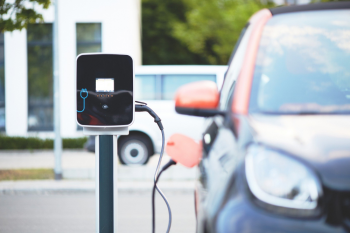FREM Article Series: The Wind Scenario Tool WiSTl
The German government tightened its climate targets in 2021 after the Federal Constitutional Court ruled that parts of the Climate Protection Act were unconstitutional. Now Germany will become greenhouse gas neutral by 2045 – 5 years earlier than the previous target. The FfE project eXtremOS, which was completed in April 2021 and examined the future of the German and European energy system, shows that onshore wind power, along with photovoltaics, will have to provide the largest share of renewable energy to achieve these goals [1]. At the same time, wind power is the renewable generation technology that faces the greatest resistance and most restrictions. Strict distance rules (with 10H in Bavaria the toughest), lengthy approval procedures, and resistance from the population majorly delay the expansion. The competition for land with agriculture or nature conservation areas further aggravates expansion planning. It is, therefore, all the more important to ensure areas that have already been tendered or built upon are correctly utilized to achieve the optimum power density, i.e., identifying the best possible positioning of the turbines. In particular, the frequently invoked increase in the power density of existing areas through repowering with newer, more powerful turbines is quite controversial in scientific circles [2].
With the wind scenario tool “WiSTl”, the FfE has built a model that can precisely model the turbines’ optimal positioning and alignment. WiSTl has since become an integral part of all potential analyses and scenarios that model onshore wind power. The history of its development, its functionality, and exemplary applications are presented in the following.
Overview of the topics in the series of articles concerning FREM
The WiSTl History
Back in 2013, a model for the synthesis of unit-specific expansion scenarios for wind power plants was created as part of the research project “MOS – Merit Order of Energy Storage 2030” at the FfE and presented at the “45th Power Plant Technology Colloquium” in Dresden. This tool was intended to take into account the expansion targets of the grid development plan for onshore wind power, which followed the strong photovoltaic expansion of the previous years. With WiSTl, it was possible for the first time to model a unit-specific expansion with an optimal wind farm configuration. WiSTl has since been further developed at the FfE and used in all major FfE projects dealing with wind power expansion or wind power potential.
How the Wind Farm Configuration Works
Three components are essential for the optimal, turbine-specific configuration of a wind farm: the shape of the area under study, the type of turbine used, and the wind supply at the site.
Wind Farm Areas and Site Classification
The first component, available areas, enters FREM from various geospatial datasets. These are usually “shapefiles” or maps of wind priority and wind suitability areas (together WEG) from regional planning associations. These are updated at regular intervals in order always to be able to feed the relevant areas into the model. Thus, the optimal wind farm configuration in already-designated areas can be determined by WiSTl; on the other hand, however, an analysis of additional non-designated areas can also be carried out by feeding in own areas. Figure 1 shows the designated wind priority areas in Bavaria.

Sites are usually classified by strong wind to weak wind locations in order to select the correct turbine types for the wind farm configuration. This classification is, in turn, based on the wind frequencies and wind speeds at the respective site, which is determined according to the Weibull distribution as the frequency distribution of wind speeds. The German Weather Service provides the Weibull distribution at the height of 80 m for Germany in a grid with an edge length of 200 m [1]. If the Weibull distribution is combined with the characteristic curves of individual turbine types, the potential full load hours at a height of 80 m can be determined. The potential full load hours at 80 m are only used as an evaluation criterion, while common hub heights of real turbine models (e.g. 150 m) are considered in the final analysis. At lower wind speeds, low wind turbines reach the same rated power faster than high wind turbines, which is determined by the ratio of rotor diameter to the generator size. Figure 2 shows the characteristic curves of a low and high wind turbine schematically.

An overview of Germany-wide potential wind power areas with low to high wind classification can be found in the last article of the series on regionalization.
Turbine Types
The wind turbines included in the model are commonly used turbines, such as the Siemens SWT-3.6-107. Important parameters for the configuration are the specific rotor diameter, which defines the distance between the turbines, and the characteristic generation profile of the turbine, which indicates the power as a function of wind speed (see Figure 3). Since the technical development of wind turbines is constantly progressing and thus more powerful turbines are entering the market, the turbine types in WiSTl are also updated at regular intervals. In addition to the designated areas, the turbines that will be relevant in the future are the most important factor for a realistic depiction of wind power development. Comparable wind potential models often work with general power densities. The great advantage of WiSTl, on the other hand, is the turbine-specific wind farm configuration.

Wind Supply
In the end, the potential yield that can be achieved at the investigated site depends on the wind supply – i.e., wind frequency and wind speed – at the investigated site. WiSTl uses weather data from the COSMO-EU and ICON-EU models of the German Weather Service (see Figure 4). In principle, the tool is also suitable for determining optimal wind farm configurations outside Europe. The modular design allows easy exchange of the European weather data against a global weather model like MERRA-2, which is also used at the FfE. The weather models are described in more detail in the fifth article in this series.

Wind Farm Configuration
The turbines are first placed at the necessary distance from each other depending on the specific rotor diameter and oriented according to the main wind direction (assumption: southwest). The turbines are placed in a regular grid with the typical ellipse shape over the wind suitability area (Figure 5 left). After variable parameterization, the imaginary grid of the wind farm is then shifted in the X-Y direction (translation) and rotated by between -30° and 30° (rotation, Figure 5 center). The parameter variation results in the optimal number and configuration of turbines within the area. With the potential yield from wind supply and turbine characteristics, a maximum number of full load hours (FLH) results for each configuration. The configuration with the highest FLH per wind suitability area is finally selected (Figure 5 right).

Use Cases
WiSTl has been used in numerous FfE projects, including the recently completed large-scale project eXtremOS, which focused on a European energy system analysis and used a simplified version of WiSTl for all European NUTS-3 regions. Another recently completed project with WiSTl participation is the “RE Forecast Bavaria”, which investigated the development of renewable electricity generation in Bavaria in four scenarios (Trend – T, Policy – P, Interconnection – V, and Regional Generation – R). In this project, the potential for wind power in the Bavarian wind suitability areas per regional planning region (ROR) was determined with the help of WiSTl and compared with the existing situation there. The calculation results in potential of 8.2 GW in RORs in Bavaria (see Figure 6).

In addition to the yield assessment, the determined potential is further divided by an assessment of the location (based on area restrictions) and a regional assessment of the ROR to generate a development factor for the buildout in the model. Thus, based on the wind farm configurations of WiSTl, a weighted additional capacity can be made for WEG and non-WEG per scenario. As a result, there is an enormously different addition per scenario according to total capacity – however, it also becomes apparent that the regional distribution of the wind power addition occurs primarily in the north of Bavaria, similar to the current picture, which is due to the few restrictions and strong winds that characterize the area, and can be seen in the heatmap representations in Figure 7.
A detailed model description and detailed results for the RE forecast Bavaria can be found here.

Further Information:
- http://ffe.de/tools/wistl/
- http://ffe.de/veroeffentlichungen/modell-zur-erstellung-anlagenscharfer-ausbauszenarien-fuer-windkraftanlagen-zur-unterstuetzung-der-netzplanung/
- http://ffe.de/projekte/studie-ee-prognose-bayern-erneuerbar-erzeugter-strom-kann-perspektivisch-bayerns-strombedarf-bilanziell-decken-dafuer-ist-allerdings-ein-deutlich-staerkerer-ausbau-erforderlich/


